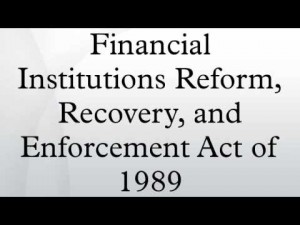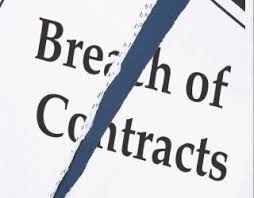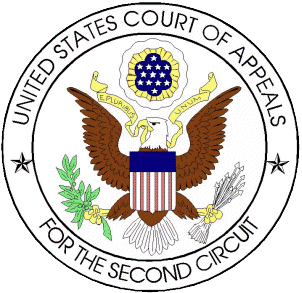Mortgage Fraud By The Banks: Can Banks Be Held Responsible? Can A Breach Of Contract Also Support A Claim For Fraud?
United States Court of Appeals for the Second Circuit
U.S ex rel. Edward ODonnell
v. Countrywide Financial Corp. and Bank Of America Corp.
Decided: May 23, 2016
Issue: Whether a bank can be held criminally liable for mail and wire fraud for knowingly selling poor quality mortgages to Fannie Mae and Freddie Mac?
Holding: The United States Court of Appeals for the Second Circuit held that the evidence was insufficient as a matter of law to prove fraud and, at best, proved only intentional breach of contract. The Court found that , in order to prove fraud, the common law requires proof, other than the fact of breach, that, at the time a contractual promise was made, the promisor had no intent ever to perform the obligation. ?The distinction is between an intent not to pay according to the terms of the contract and an intent to obtain goods under color of a formal sale, upon a sham promise to pay, but with the design of never paying for them.
To constitute the fraud, there must be a preconceived design never to pay for the goods. A mere intent not to pay for the goods when the debt becomes due, is not enough; that falls short of the idea. A design not to pay according to the contract is not equivalent to an intention never to pay for the goods, and does not amount to an intention to defraud the seller outright, although it may be evidence of such a contemplated fraud. Burrill v. Stevens, 73 Me. 395, 399 400 (1882)
Facts:?A jury found Defendants-Appellants liable under the Financial Institutions Reform, Recovery, and Enforcement Act of 1989 for mail or wire fraud affecting a federally insured financial institution, arising from the sale of mortgages to government-sponsored entities. At the penalty stage, the District Court imposed penalties exceeding $1.2 billion. On appeal, Defendants-Appellants argue, inter alia, that the proof at trial is insufficient under the mail and wire fraud statutes as a matter of law.
The provision of FIRREA under which Defendants were found liable provides for civil penalties against whoever violates or conspires to violate, inter alia, the federal mail or wire fraud statutes, see 18 U.S.C. 1341, 1343, in a manner affecting a federally insured financial institution, 12 U.S.C. 1833a(a), (c)(2).9. ?The Court found that the Government failed to prove the necessary FIRREA prerequisite i.e., a violation of (or conspiracy to violate) 1341 or 1343.
The Government alleged that Defendant’s violated the federal mail and wire fraud statutes by selling poor-quality mortgages to Fannie Mae and Freddie Mac. On appeal, Defendants argue that the evidence at trail shows at most an intentional breach of contract i.e., that they sold mortgages that they knew were not of the quality promised in their contracts and is insufficient as a matter of law to find fraud. The Court held that they agree, concluding that the trial evidence fails to demonstrate the contemporaneous fraudulent intent necessary to prove a scheme to defraud through contractual promises. The United States Court of Appeals for the Second Circuit held that they agree and accordingly reverse the judgment of the District Court.
Legal Analysis: The United States Court of Appeals for the Second Circuit held that the common law does not permit a fraud claim based solely on contractual breach; at the same time, a contractual relationship between the parties does not wholly remove a party’s conduct from the scope of fraud. What fraud in these instances turns on, however, is when the representations were made and the intent of the promisor at that time.
Where allegedly fraudulent misrepresentations are promises made in a contract, a party claiming fraud must prove fraudulent intent at the time of contract execution; evidence of a subsequent, willful breach cannot sustain the claim. It is emphatically the case and has been for more than a century that a representation is fraudulent only if made with the contemporaneous intent to defraud i.e., the statement was knowingly or recklessly false and made with the intent to induce harmful reliance.
 Of course, fraudulent intent is rarely susceptible of direct proof, and must instead be established by legitimate inferences from circumstantial evidence, United States v. Sullivan, 406 F.2d 180, 186 (2d Cir. 1969). Nonetheless, where the relevant representation is made within a contract, the common law rejects any attempt to prove fraud based on inferences arising solely from the breach of a contractual promise: That proof that a promise was made and that it was not fulfilled is sufficient to prove fraud is not, and has never been, a correct statement of the law, Tenzer, 39 Cal. 3d at 30.
Of course, fraudulent intent is rarely susceptible of direct proof, and must instead be established by legitimate inferences from circumstantial evidence, United States v. Sullivan, 406 F.2d 180, 186 (2d Cir. 1969). Nonetheless, where the relevant representation is made within a contract, the common law rejects any attempt to prove fraud based on inferences arising solely from the breach of a contractual promise: That proof that a promise was made and that it was not fulfilled is sufficient to prove fraud is not, and has never been, a correct statement of the law, Tenzer, 39 Cal. 3d at 30.
The United States Court of Appeals for the Second Circuit held, in a contractual promise can only support a claim for fraud upon proof of fraudulent intent not to perform the promise at the time of contract execution. Absent such proof, a subsequent breach of that promise even where willful and intentional, cannot in itself transform the promise into a fraud.? 
Unlike fraud at common law, the federal statutes require neither reliance by nor injury to the alleged victim. Accordingly, The Court held that they deem the common laws contemporaneous fraudulent intent principle incorporated into the federal mail and wire fraud statutes. Applying these principles to a fraud claim based on the breach of a contractual promise, the Court concluded that the proper time for identifying fraudulent intent is contemporaneous with the making of the promise, not when a victim relies on the promise or is injured by it. Only if a contractual promise is made with no intent ever to perform it can the promise itself constitute a fraudulent misrepresentation.
In sum, the Government has never argued much less proved at trial that the contractual representations at issue were executed with contemporaneous intent never to perform, and the trial record contains no evidence that the three Key Individuals or anyone else had such fraudulent intent in the contract negotiation or execution. Instead, the Governments proof shows only post-contractual intentional breach of the representations. Accordingly, the jury had no legally sufficient basis on which to conclude that the misrepresentations alleged were made with contemporaneous fraudulent intent. Because we construe the federal mail and wire fraud statutes to require such proof, consistent with the common law, the Government has not proven the prerequisite violation necessary to sustain an award of penalties under FIRREA. The United States Court of Appeals for the Second Circuit reversed and remanded the case with instructions to enter judgment for defendants.
